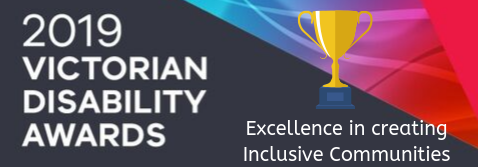
“I don’t have much to say in meetings. I don’t think anyone does, yeah it depends how it is chaired I guess. Depends on the chairperson. Sometimes the chairperson can talk all day, sometimes they can be a bit quiet and let other people talk …the Chair over talks . . . oh I think she should slow things down a bit. My Knowledge Is Not As Good As Other People’s”
People With An Intellectual Disability Having An Equal And Meaningful Voice In Government Advisory Forums, Patsie Frawley
Getting the Chair on Board (so to speak!)
A good chairperson is critical to running accessible and fully inclusive meetings. It is therefore important to have a chair who supports the value of consumer participation and is committed to developing a group or committee where everyone is equal, has an equal say and whose opinions are valued.
Tip 1: The Welcome Mat
To ensure new representatives feel welcomed and included from the start of the first meeting the chair can:
- Introduce yourself to the new consumer representative before the meeting starts.
- Explain it is your job to make sure everyone is included and let them know it is OK to ask questions during the meeting.
- Start the meeting with introductions and encourage everyone to explain why they are involved.
- Encourage the consumer representative to come and speak to you in the break if they have any issues or concerns they don’t want to ask in the meeting.
- Allow time for the new representative to say a little bit about themselves including passions and issues, why they are there, and about who they represent.
Tip 2: Using the Agenda to give everyone a say
A tried and true method of making meetings more accessible and inclusive involves making good use of the agenda process. The chair can use the agenda to slow down the meeting to ensure everyone has their say by using the following steps:
- Make sure the agenda is in Easy English, is clear, concise and easy to follow.
- At the start of each new agenda item explain the item and topics to be discussed.
- Once each agenda item discussion is completed summarise the discussion and any decisions made.
- Before moving on ask each person individually if they have anything more they would like to add and if they agree or disagree with the decision. This enables people who may not have the confidence to speak up in the general discussion to have their say.
- If there is going to be a vote make sure everyone understands what the vote is about.
- Monitor the pace of the meeting. Consider asking the group if the pace is too fast or too slow prior to beginning the next agenda item.
Tip 3: Equality
- As a supporter of consumer participation lead by example.
- Foster an environment which respects and supports diversity and equality.
- Make sure everyone at the meeting is respected and engaged equally.
- Make sure you listen to and explore all ideas equally.

“People with an intellectual disability who have not always felt respected and accepted. . .can recognise negative attitudes and moments of rejection. Hannah interpreted these experiences through people not actively engaging her in conversations at meetings, an incident where the Chairperson overlooked her for an invitation to an event, and when people spoke over her at meetings.”
Patsie Frawley, People with an Intellectual Disability Having an Equal and Meaningful Voice In Government Advisory Forums.
Tip 4: User friendly is best.
To make meetings user friendly the Chair should:
- Make eye contact with the representatives.
- Ask one question at a time.
- Use straightforward language, words that everyone understands and where possible avoid using jargon and acronyms.
- When it is necessary to use jargon, provide definitions – think about using a word bank.
- Encourage consumer representatives to speak up and ask for an explanation if they don’t understand.
- Provide short, frequent breaks. A five-minute break each hour works better than 15 minutes after two hours.
Tip 5: Speaking Up
- Encourage discussion but be aware it may take several meetings before consumer representatives feel confident to speak up and have their say.
- Let consumer representatives know it is ok for them to disagree.
- Make sure consumer representatives have the opportunity to fully express their viewpoint without being interrupted.
- Be patient. Give consumer representatives time to explain things or ask questions even if it takes a while.
- Do not try to guess what the person is saying, or cut them off even if you think you know the end and can say it faster.
- Avoid speaking for others – encourage consumer representatives to speak on their own behalf.
Tip 6: At the End of the Meeting
After the meeting talk to the consumer representative about how they felt the meeting went, including:
- Positive and negative feedback.
- Did they feel included?
- Did they get to have their say?
- Were they listened to and their opinions respected?
- Problems which need addressing.
- Anything that needs to be done to improve the experience.
Meeting Tips from consumer advocates:
Amanda’s Top Tips
Brain Injury Matters’ Top Tips
Next Page: Inclusive Meeting Practice – It Takes Everyone!
Chapter 5. Inclusive Meetings
Menu: Consumer Participation Kit



